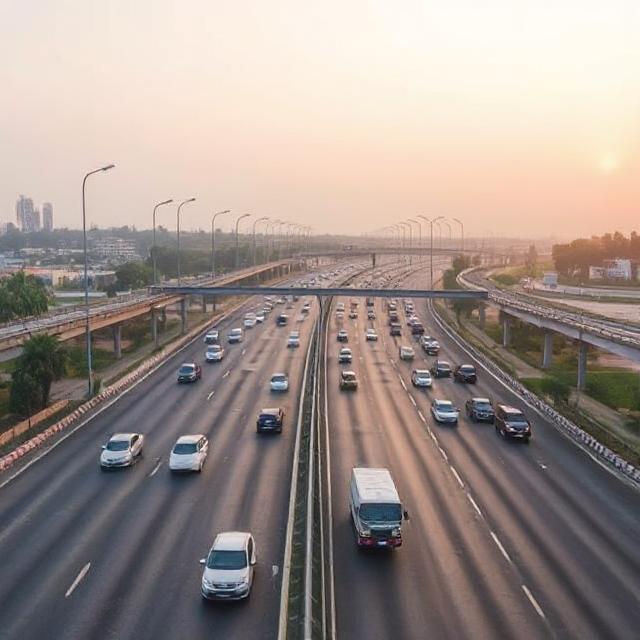Discover how India’s expressways are transforming transportation with faster travel, improved logistics, and economic growth. Learn about key expressways and their impact.
The Role of Expressways in India’s Modern Transport System
India is rapidly evolving its transport infrastructure to meet the demands of a growing economy and increasing urbanization. At the heart of this transformation lies the development of expressways—high-speed, access-controlled roads designed for efficient and smooth travel.
In this post, we explore the importance of expressways, their economic and logistical impact, and how they fit into India’s broader transport strategy.
🚀 What Are Expressways?
Expressways are high-capacity roads with controlled access, typically featuring multiple lanes, no cross traffic, and grade-separated junctions. Unlike regular highways, expressways are built for high-speed travel, improving both safety and efficiency.
🏗️ Why Expressways Matter
1. Reduced Travel Time
Expressways cut down travel time significantly by eliminating bottlenecks, intersections, and slow-moving traffic. For example, the Delhi–Meerut Expressway reduced travel time from over 2 hours to just 45 minutes.
2. Improved Freight Movement
With smoother and faster movement, expressways support logistics and supply chains, especially for industries requiring timely deliveries like e-commerce, agriculture, and pharmaceuticals.
3. Boost to Economic Growth
Infrastructure development around expressways—like warehouses, industrial parks, and logistics hubs—stimulates job creation and regional development.
4. Better Safety Standards
Access control, lane separation, and modern traffic management systems result in fewer accidents compared to congested highways and city roads.
5. Environmental Efficiency
Vehicles traveling at consistent high speeds consume less fuel and emit fewer pollutants, making expressways a more sustainable option for long-distance transport.
🛣️ Major Expressways in India
Here are some of the most significant expressways contributing to India’s transport modernization:
🔹 Delhi–Mumbai Expressway (1,386 km)
Connecting the national and financial capitals, this expressway is expected to cut travel time by 50% and boost industrial development in 6 states.
🔹 Yamuna Expressway (165 km)
Connects Greater Noida with Agra, offering smooth access to the Taj Mahal and reducing tourist travel time drastically.
🔹 Lucknow–Agra Expressway (302 km)
A key corridor in Uttar Pradesh, supporting fast transit between major cities and linking with other national highways and expressways.
🔹 Purvanchal Expressway (340 km)
Connects eastern UP to Lucknow and further to Delhi, enhancing accessibility in historically underserved regions.
🌐 National Expressway Network Plan
The Government of India, under programs like Bharatmala Pariyojana, aims to create a national network of expressways, improving connectivity between key economic zones, ports, and border areas.
📈 Future Outlook
- Greenfield expressways: New routes like the Ganga Expressway and Bengaluru–Chennai Expressway are under construction.
- Smart infrastructure: Integration of electronic tolling, surveillance systems, and EV charging stations is underway.
- Private investment: Increased public-private partnerships (PPPs) are accelerating expressway development.
🧭 Conclusion
Expressways are more than just fast roads—they are engines of connectivity, catalysts for economic growth, and backbones of a modern transport system. As India continues to urbanize and digitize, the role of expressways in supporting this transformation will only grow stronger.
Keywords:
- Expressways in India
- India transport infrastructure
- role of expressways
- national expressways
- modern transport in India
- economic impact of expressways
- Indian road network
- expressway benefits

